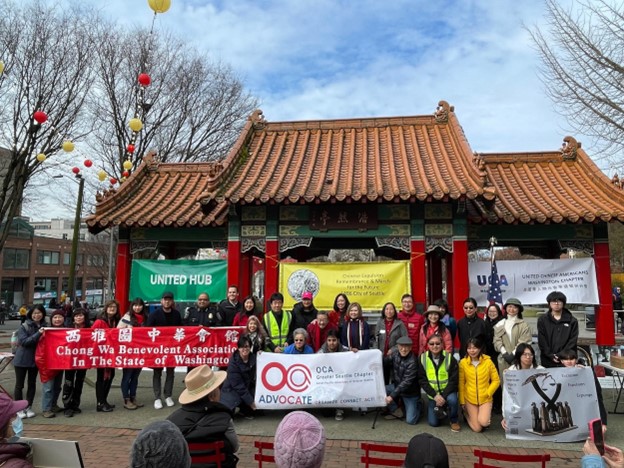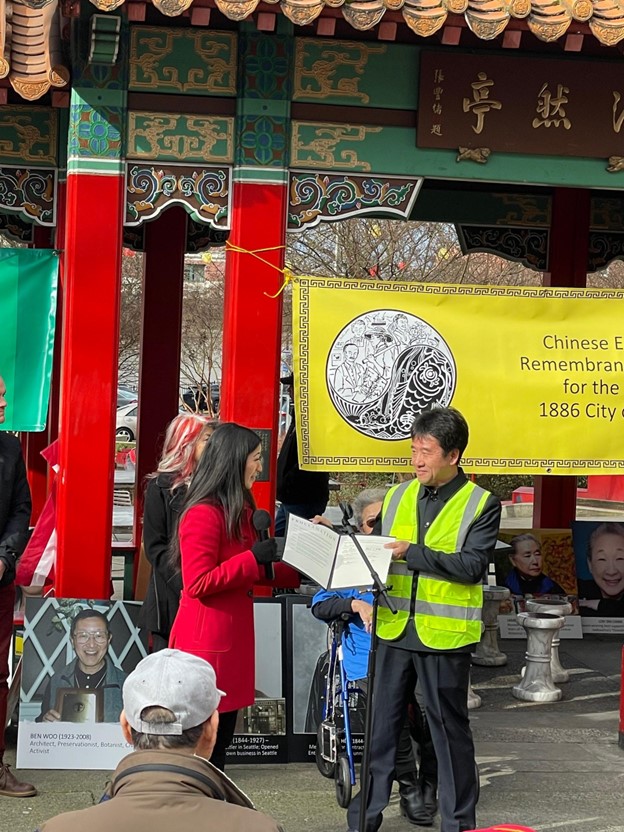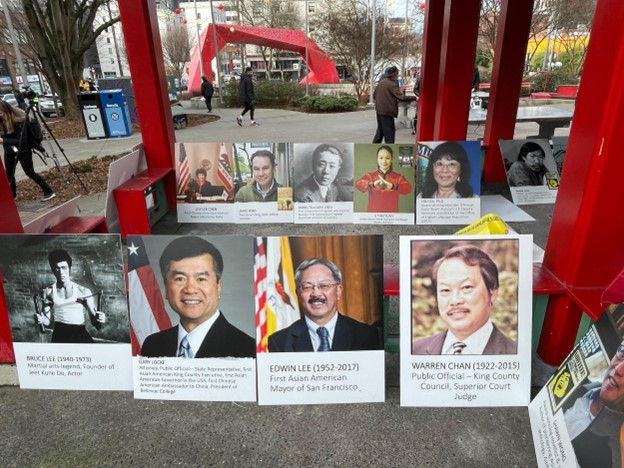By Shawna Ma
NORTHWEST ASIAN WEEKLY
On Feb. 17th the Fourth Annual Chinese Expulsion Rally and March took place at Hing Hay Park in Seattle’s Chinatown. 200 people were involved in the event including 20 Chinese American organizations.

Over 200 people gathered at Hing Hay Park last Saturday to commemorate the Chinese Exclusion Act. Picture courtesy of Shawna Ma
Dating back to 1882, when Seattle enacted the Chinese Exclusion Act, Chinese Americans were banned from the United States. Under the threat of gunfire, Chinese Americans had to leave their homes. Although the remaining Chinese Americans contributed a lot to the reconstruction of Seattle in the Great Seattle Fire of 1889, including repairing the destruction and maintaining the Seattle Central order, it didn’t make any changes to the act at the time. The situation continued until 1943. Until 1965, the banned effects on immigrants persisted.
Now in the 21st century, Chinese Americans are also being affected such as the pandemic which some used to blame on China. From March 2020 to June 2021, 9,000 people in Seattle expressed their hate for Chinese Americans in a questionnaire. There is also hate spread in Chinatown. During the pandemic, there were many shut down businesses and community controls.
Most of the candidates who spoke at the event were first generation Chinese Americans. They come from different fields of work, but they all call for more united efforts by Chinese Americans. Some nonprofit organizations that were present work to create a more inclusive atmosphere and eliminate day-to-day discrimination. There are also art museums dedicated to making people remember how we come together to bring justice.
In Hing Hay Park, the pavilion is decorated with many posters and photos of pioneers in history. These photos help Chinese Americans prove their past contributions to the United States. Most of them are public officials, artists, and businessmen. Their presence preserved history, and now people don’t want history to happen again.
Chinese Americans who came to the United States strive to make contributions in different fields. “I am an immigrant from Hong Kong, and after my undergraduate studies, I worked as an Asian Student Commission Director.” said Connie So, who completed her studies at the University of Washington. “Now, I’m a professor who teaches Asian American Ethic.” So was also the host of this event, conveying the history of Chinese American to everyone who participated in this meeting.
“I used to work in IT, and now I’m with a non-profit organization like United Hub,” said Winston Lee, one of the back coordinators of this event. “I hope in my position, I can provide better services to the public. None of us want to see history repeats. I also hope that I can improve the cohesion of Chinese Americans. I will bring people together and make more contributions through my own efforts.”

Seattle City Councilwoman Tanya Woo (left) and Winston Lee (right) at the gathering. Photo courtesy of Shawna Ma.
Attendees came from different areas all over Seattle. Everyone communicated warmly and made new friends at this event. Although they speak different languages, they all live in harmony with each other and share the same hope that their region can be better.
Shawna can be contacted at info@nwasianweekly.com.





There are a number of incorrect statements in this article. For example, Seattle did not past the Chinese Exclusion Acts; U.S. Congress passed it and the President signed it. Chinese Exclusion Act did not “ban” Chinese entirely, it prohibited Chinese laborers from immigrating to the U.S. And, Chinese were not “under threat of gun fire” during the 1886 anti-Chinese riot; they were put on wagons and taken to the waterfront. Therefore, Chinese did contribute greatly to the re-construction of Seattle after the 1889 fire.
Congress, not Seattle, enacted the Chinese Exclusion Act of1882.